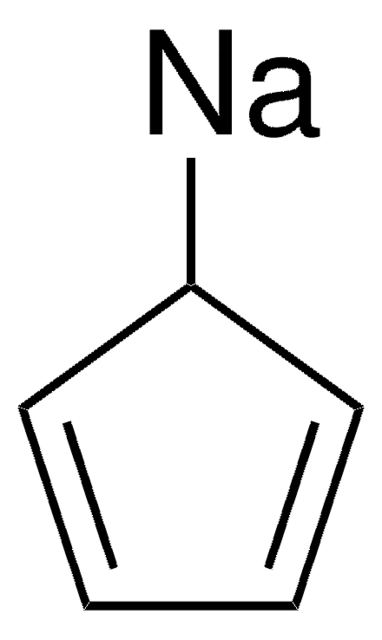If this product has an expiration or retest date, it will be shown on the Certificate of Analysis (COA, CofA). If there is no retest or expiration date listed on the product's COA, we do not have suitable stability data to determine a shelf life. For these products, the only date on the COA will be the release date; a retest, expiration, or use-by-date will not be displayed.
For all products, we recommend handling per defined conditions as printed in our product literature and website product descriptions. We recommend that products should be routinely inspected by customers to ensure they perform as expected.
For products without retest or expiration dates, our standard warranty of 1 year from the date of shipment is applicable.
For more information, please refer to the Product Dating Information document: https://www.sigmaaldrich.com/deepweb/assets/sigmaaldrich/marketing/global/documents/449/386/product-dating-information-mk.pdf
Kluczowe dokumenty
440248
Dichloromethylsilane
≥97%
Synonim(y):
Methyldichlorosilane
Wybierz wielkość
251,00 zł
Wybierz wielkość
About This Item
251,00 zł
Polecane produkty
gęstość pary
4 (vs air)
Poziom jakości
ciśnienie pary
6.79 psi ( 20 °C)
Próba
≥97%
Formularz
liquid
temp. samozapłonu
471 °F
granice wybuchowości
>55 %
współczynnik refrakcji
n20/D 1.398 (lit.)
bp
41 °C (lit.)
mp
−93 °C (lit.)
gęstość
1.105 g/mL at 25 °C (lit.)
temp. przechowywania
2-8°C
ciąg SMILES
C[SiH](Cl)Cl
InChI
1S/CH4Cl2Si/c1-4(2)3/h4H,1H3
Klucz InChI
NWKBSEBOBPHMKL-UHFFFAOYSA-N
Szukasz podobnych produktów? Odwiedź Przewodnik dotyczący porównywania produktów
Opis ogólny
Zastosowanie
- A General and Selective Synthesis of Methylmonochlorosilanes from Di-, Tri-, and Tetrachlorosilanes - Omawia metodę syntezy metylomonochlorosilanów, wykazującą potencjał do różnorodnych zastosowań w syntezie chemicznej (Y Naganawa et al., 2020).
- Polimeryzacja metylosililenów do polimetylosilanów lub polikarbosilanów po odchlorowaniu dichlorometylosilanów. - Bada polimeryzację metylosililenów, oferując wgląd w produkcję polimetylosilanów lub polikarbosilanów z dichlorometylosilanów (Y Tian et al., 2016).
- Synteza polimetylohydrosiloksanu o niskiej lepkości przy użyciu monomeru dichlorometylosilanu - koncentruje się na wytwarzaniu polimetylohydrosiloksanu o niskiej lepkości poprzez hydrolizę-kondensację dichlorometylosilanu, istotnego dla różnych zastosowań przemysłowych (VF Arini et al., 2022).
Opakowanie
Hasło ostrzegawcze
Danger
Zwroty wskazujące rodzaj zagrożenia
Zwroty wskazujące środki ostrożności
Klasyfikacja zagrożeń
Acute Tox. 3 Inhalation - Acute Tox. 3 Oral - Eye Dam. 1 - Flam. Liq. 2 - Skin Corr. 1A - Water-react 3
Zagrożenia dodatkowe
Kod klasy składowania
4.3 - Hazardous materials which set free flammable gases upon contact with water
Klasa zagrożenia wodnego (WGK)
WGK 1
Temperatura zapłonu (°F)
-18.4 °F
Temperatura zapłonu (°C)
-28 °C
Środki ochrony indywidualnej
Faceshields, Gloves, Goggles
Wybierz jedną z najnowszych wersji:
Masz już ten produkt?
Dokumenty związane z niedawno zakupionymi produktami zostały zamieszczone w Bibliotece dokumentów.
Klienci oglądali również te produkty
-
How can I determine the shelf life / expiration / retest date of this product?
1 answer-
Helpful?
-
-
How is shipping temperature determined? And how is it related to the product storage temperature?
1 answer-
Products may be shipped at a different temperature than the recommended long-term storage temperature. If the product quality is sensitive to short-term exposure to conditions other than the recommended long-term storage, it will be shipped on wet or dry-ice. If the product quality is NOT affected by short-term exposure to conditions other than the recommended long-term storage, it will be shipped at ambient temperature. As shipping routes are configured for minimum transit times, shipping at ambient temperature helps control shipping costs for our customers. For more information, please refer to the Storage and Transport Conditions document: https://www.sigmaaldrich.com/deepweb/assets/sigmaaldrich/marketing/global/documents/316/622/storage-transport-conditions-mk.pdf
Helpful?
-
Active Filters
Nasz zespół naukowców ma doświadczenie we wszystkich obszarach badań, w tym w naukach przyrodniczych, materiałoznawstwie, syntezie chemicznej, chromatografii, analityce i wielu innych dziedzinach.
Skontaktuj się z zespołem ds. pomocy technicznej











